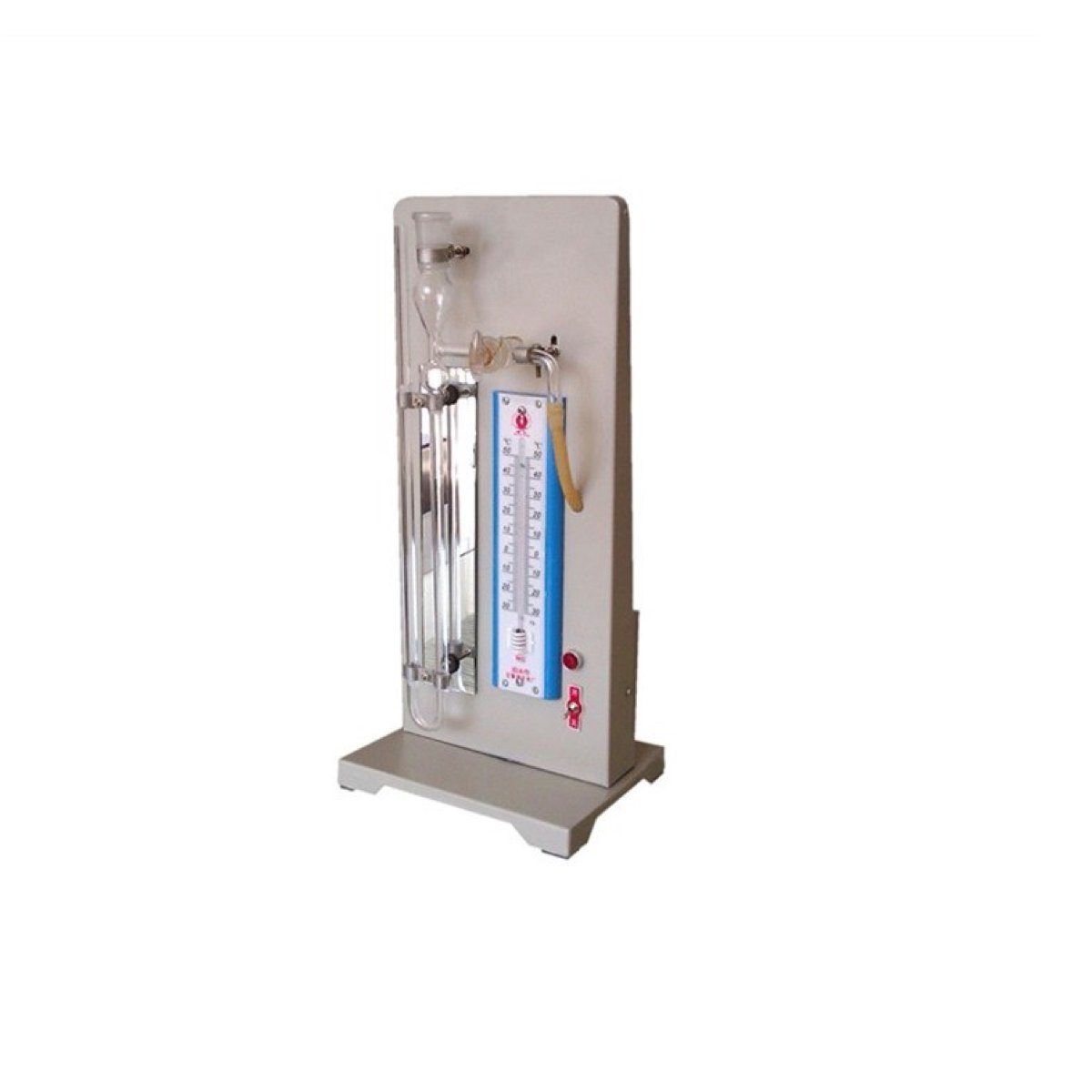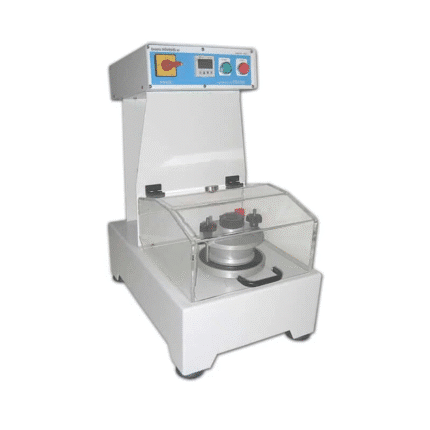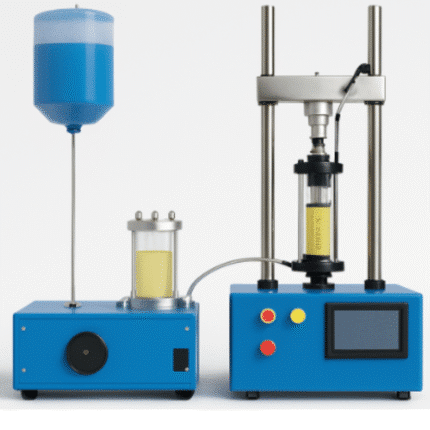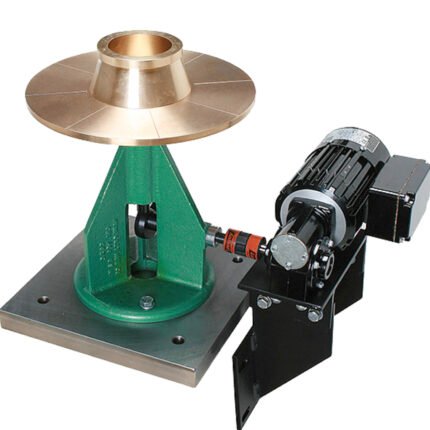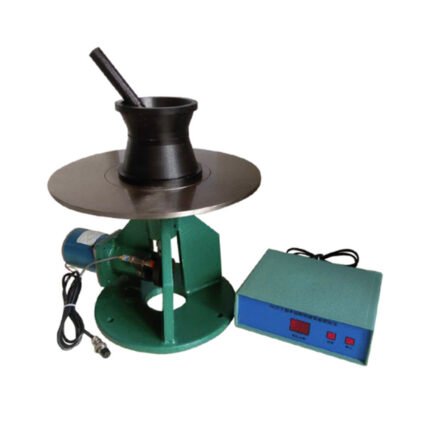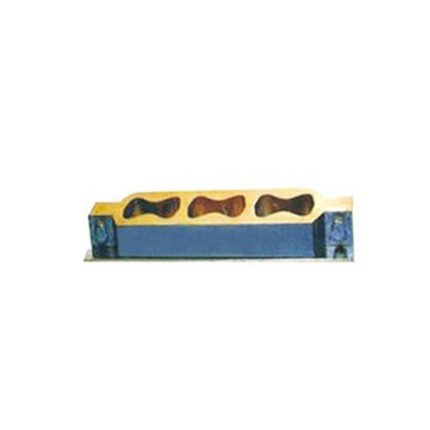AZA 0787 BLAINE’S AIR PERMEABILITY APPARATUS
- Determines cement fineness via air permeability
- Conforms to IS 4031 and ASTM C204 standards
- Ideal for labs, QC departments, and cement plants
- Precision glass manometer and permeability cell
- Supplied with timer, filter paper, and plunger
Description
Blaine’s Air Permeability Apparatus is a precision laboratory instrument used to determine the specific surface area (fineness) of cement and other powdered materials by measuring their air permeability. This test helps assess how fine the cement particles are, which directly affects hydration rate, setting time, and overall strength of cement-based structures.Blaine’s Air Permeability Apparatus, Cement Fineness Tester, Air Permeability Lab Device.
Used globally in cement manufacturing plants, R&D labs, and third-party testing agencies, Blaine’s apparatus works by passing a known quantity of air through a compacted cement bed and measuring the flow resistance. The finer the cement particles, the more resistant the air flow becomes. This value is translated into specific surface area (cm²/g), a key quality indicator for cement.
The instrument is built to comply with both IS 4031 (Part 2):1988 – Methods of Physical Tests for Hydraulic Cement – Determination of Fineness by Air Permeability and ASTM C204 – Standard Test Method for Fineness of Hydraulic Cement by Air-Permeability Apparatus, ensuring standardized, reliable test results.Blaine’s Air Permeability Apparatus, Cement Fineness Tester, Air Permeability Lab Device.
Components of the Apparatus:
-
Permeability Cell: Holds the cement bed and provides the test environment.
-
Manometer: U-tube or inclined type filled with indicating fluid (dibutyl phthalate) to monitor pressure drop.
-
Reference Powder: Standard material with known specific surface area for calibration.
-
Plunger: For compressing the cement bed uniformly.
-
Stopwatch/Timer: Ensures accurate timing of air passage.
-
Filter Paper Discs: Prevents powder leakage and ensures accurate air flow.
Working Principle:
Air is drawn through a bed of cement powder that’s compacted to a specific porosity. The rate of air flow and the corresponding pressure drop are recorded. The specific surface area is then calculated using the Blaine equation, which relates air permeability to surface area.
This test is critical for maintaining consistency in cement properties. A higher surface area means faster hydration and strength gain, while low surface area may lead to delayed setting and poor bonding.
Use Cases:
-
Cement production plants for daily batch quality checks
-
Construction material testing labs
-
Civil engineering departments for research and academics
-
Third-party inspection and certification services
-
Comparative testing across different cement grades
Benefits of Blaine’s Apparatus:
-
Fast and accurate determination of cement fineness
-
Non-destructive and repeatable test method
-
Enables optimization of cement grinding operations
-
Helps ensure cement meets standard strength and durability benchmarks
-
Easy-to-use setup ideal for both lab technicians and students
This apparatus is especially useful when determining the performance potential of different cement types, such as Portland cement, pozzolanic cement, or blended mixes. Regular monitoring of cement fineness helps improve the grinding process and reduce energy costs in manufacturing plants.
Specifications:
| Parameter | Specification |
|---|---|
| Standard Compliance | IS 4031 (Part 2):1988, ASTM C204 |
| Specific Surface Range | 1000–5000 cm²/g |
| Manometer Type | U-tube or inclined, with dibutyl phthalate fluid |
| Cell Volume | 20 – 25 cm³ (typical) |
| Sample Mass | 2 – 5 g (varies by cement type) |
| Air Source | Built-in hand pump or external vacuum |
| Accessories Included | Filter paper discs, plunger, timer, reference powder |
| Material of Construction | Borosilicate glass and powder-coated metal base |
Frequently Asked Questions (FAQ):
Q1: What does Blaine’s Apparatus measure?
It measures the specific surface area (cm²/g) of cement, which indicates the fineness of the particles.
Q2: Why is cement fineness important?
Finer cement hydrates faster and contributes to early strength gain. It also affects workability and water demand.
Q3: Which standards does this apparatus meet?
It complies with IS 4031 (Part 2) and ASTM C204 for air permeability-based fineness testing.
Q4: Can it be used for materials other than cement?
Yes, with proper calibration, it can test fineness of fly ash, pozzolana, and similar powders.
Q5: Is calibration required?
Yes. Use a certified reference material with known surface area to calibrate the apparatus before testing.
Additional information
| Standard Compliance |
IS 4031 (Part 2):1988, ASTM C204 |
|---|---|
| Specific Surface Range |
1000–5000 cm²/g |
| Manometer Type |
U-tube or inclined, with dibutyl phthalate fluid |
| Cell Volume |
20 – 25 cm³ (typical) |
You may also like…
Abrasion Testing Machine for Glazed Tiles (AZA 1261)
Abrasion Testing Machine for Glazed Tiles (AZA 1262)
ABS Braking System Training Board Simulator (Model AZA1245)
Advanced Triaxial Test System (UU–CU–CD Capable) (AZA 1296)
- UU–CU–CD test modes for complete soil strength profiling
- Automated control of pressure, load, and drainage
- Compatible with clay, silt, sand, and mixed soils
- Integrated data acquisition and real-time graphing
- Meets ASTM D2850, D4767, BS1377, AASHTO standards
- Ideal for geotechnical, research, and academic use
Air Bag Trainer (Model AZA1246)
Alternator Trainer (Model AZA1247)
Related products
AZA 0786 CEMENT SAMPLER
AZA 0792 FLOW TABLE (MOTORISED)
AZA 0794 FLOW TABLE (MOTORISED)
AZA 0795 LE CHATELIER MOULD
AZA 0799 VOLUME CHANGE APPARATUS
- Precision apparatus for measuring soil volume change
- Ideal for CD and CU triaxial testing
- Manual and digital versions available
- Durable lab-grade stainless steel build
- Fully compliant with IS and ASTM standards
- Provided with all necessary accessories
- Backed by Azalab’s quality assurance and support
AZA 0812 GAUGING TROWEL
AZA 0813 PLUNGER PENETRATION APPARATUS
- Measures consistency of cement mortar mixtures
- Complies with IS 4031 (Part 6) and ASTM standards
- Durable plunger with easy depth measurement scale
- Ensures reliable and repeatable results
- Compact and corrosion-resistant lab design
- Ideal for labs, cement plants, and research facilities

 Rock
Rock Aggregate
Aggregate Cement
Cement Concrete
Concrete Soil
Soil Steel
Steel Bitumen/Asphalt
Bitumen/Asphalt Security Survey Equipment
Security Survey Equipment General Items
General Items